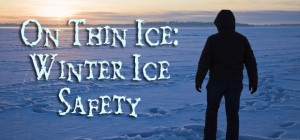Ice and cold water safety is important and concerns many of us who participate in outdoor activities near water. Too many residents are injured from falling through ice and exposure to cold water.
Skaters and children playing near bodies of water fall through the ice; boaters and canoeists overturn their crafts; unleashed pets run onto the ice and people chase after them. Educating residents on the dangers of being around ice and cold water is vital to staying safe.
Take a moment to read over the Saftey Tips and Facts
When is Ice Safe?
 The simple answer is never; no ice is safe ice. This is the message that the Coast Guard advocates. The reality is that people will be on the ice for a variety of recreations.
The simple answer is never; no ice is safe ice. This is the message that the Coast Guard advocates. The reality is that people will be on the ice for a variety of recreations.
Below are the published guidelines for ice thickness and strength. These are for clear, blue ice on lakes and ponds. There are other factors to take into account along with the Ice.
Thickness Guidelines:
Ice seldom freezes uniformly; ice may be a foot thick in one location and only an inch or two thick a few feet away. The insulating effect of snow slows down the freezing process. The extra weight of the snow also reduces how much weight the ice sheet can support. The movements of schools of fish can bring warm water up from the bottom of the lake, adversely affecting the safety of the ice. Many lakes and ponds have springs, inlets, outlets and other types of currents that may create dangerous thin spots. Cattail stands and tree roots near the water’s edge can weaken ice and slow the formation of ice. Avoid these areas when possible.
General Ice Thickness Guidelines
For new, clear ice only 4” or less – STAY OFF
4”-6” – Ice fishing, foot travel in single – file lines
6”-10” – Snowmobiles and ATV*
10”–16”–Small cars and pickups*
16+” medium sized cars or mid-sized pick-up*
*It is best to avoid driving on the ice whenever possible.
